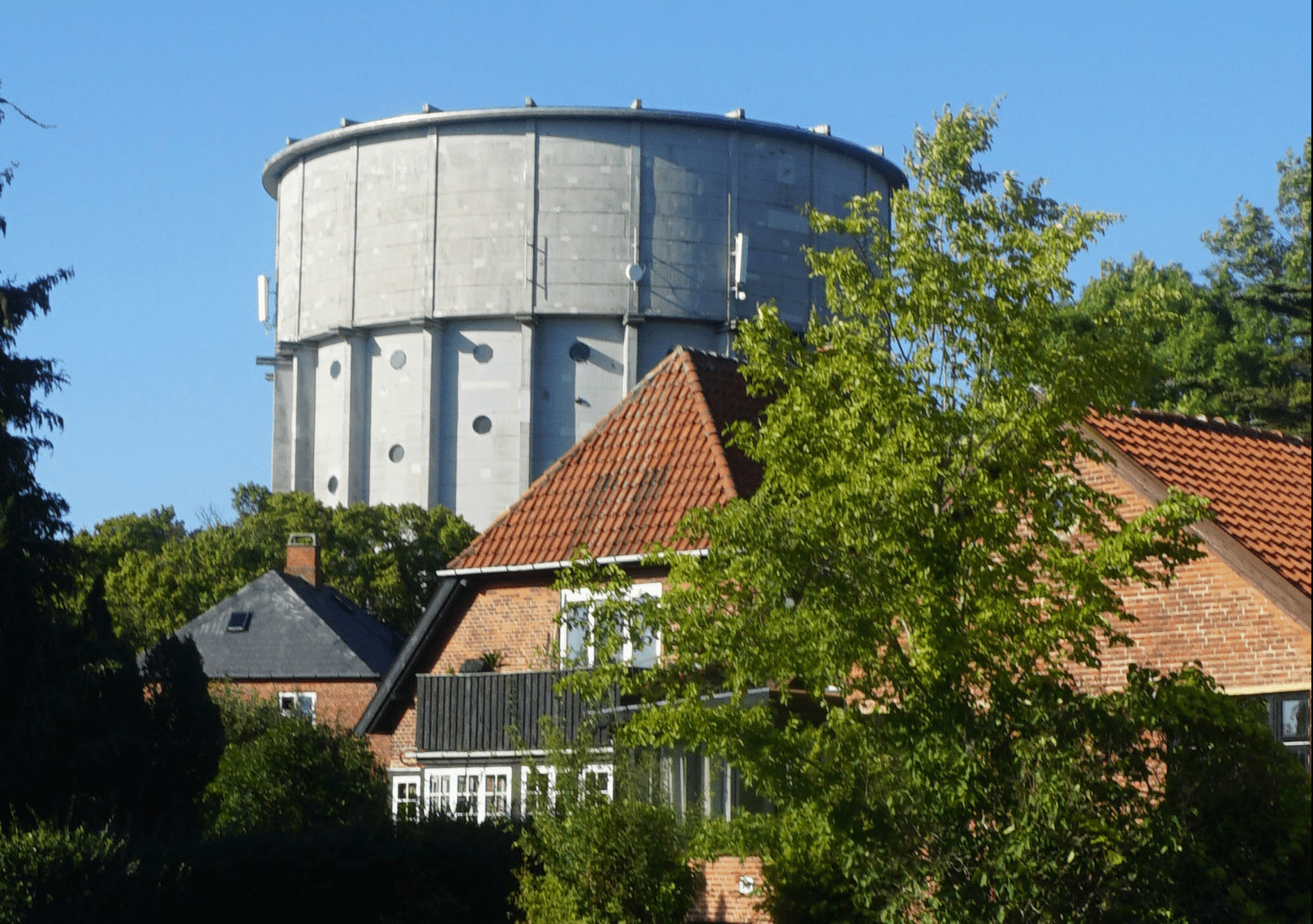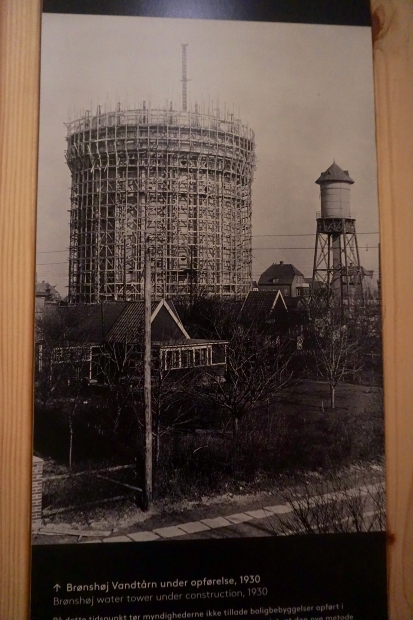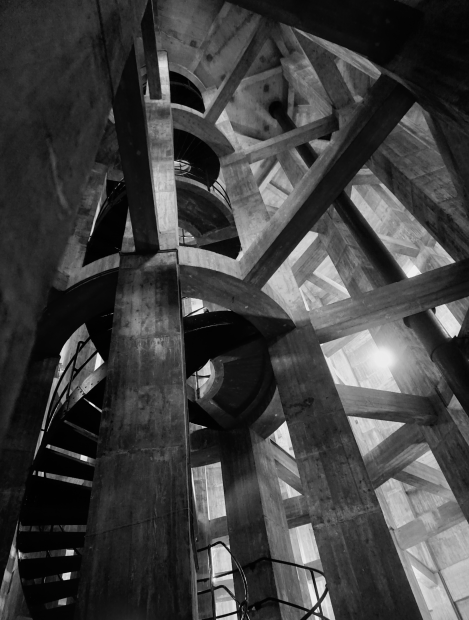A couple of years ago I was planning an excursion with some friends around Utterslev Mose, and it got me wondering if there was a little museum or gallery that we could visit as a sort of added bonus to the walk.
That’s when I happened on Brønshøj Vandtårn (kulturn.kk.dk/vandtaarn). At the time the Wetland Project was running an art installation consisting of 24 hours of sounds from a British Columbia wetland, combined with an abstract visual and light exhibit.
It sounded so strange that I felt I had to go and check it out before bringing my friends. When I arrived at the tower, I was impressed with the Wetland Project, but outright flabbergasted by the tower itself.
You step inside and immediately your eyes are drawn upwards, upwards, following the lines of the massive concrete pillars inside the hollow building. In the middle there is a spiral staircase. A series of round windows, also set in a spiral, allow shafts of light to fall at odd angles.
My friends also loved the space, and we all put the tower on our list of places to keep an eye on. You can also join the Brønshøj Vandtårn association (broenshoejvandtaarn.dk) and help shape the future of the tower.
Water and waves
Clearly the architect Ib Lunding had water on his mind when he designed the tower, which was built from 1928-30.
Though the use of concrete as a material and the minimalistic aspect of the tower make us think of functionalism, the spiralling effect of the whirling water is a major inspiration – it is echoed in the green space around the tower, where trees have been planted to resemble a sweeping wave.
My fascination with this tower led me to an exhibition at the Museum of Copenhagen (cphmuseum.kk.dk) that featured architectural drawings and photos from 100 years of development of the city.
This exhibition was also a treasure trove of information about Brønshøj Vandtårn. I have included one of the architectural drawings and also a photograph taken during the construction of the tower.
The sound of emptiness
I would love to go to a concert at the tower, where the reverberation of sound is apparently quite magnificent – but so far I have only managed one event: the cool, recently-staged ‘Playground’ by Cat Eyed People.
They set up eight different Scalextric race tracks on which cars activating different instruments go by at high speeds. If you look at the Cat Eyed People’s Facebook page, you’ll find both audio and visuals from this fun and inventive event.
While the tower is owned by Copenhagen Municipality, it is administered by Kultur N and can be rented for meetings, photo shoots and cultural events, both by citizens and private companies.
It is in my opinion quite an extraordinary space, but remember a jacket because even on a warm and sunny day, it’s cold inside.
There is more to see
The tower is a 5 km bike ride from the city centre. It is also possible to arrive by bus – lines 5C and 250S will take you there directly from Nørreport Station.
At Brønshøj Torv, before going to the tower you can visit the small memorial park with sculptures commemorating the Swedish siege of Copenhagen from 1658-1660. Back then, the Swedish army based its headquarters on high ground in Brønshøj.
As well as Utterslev Mose, which is 1.5 km away, you can find the smaller but quite beautiful park of Degnemosen, which is practically in the backyard of the water tower.
If this kind of architecture is your thing you might also want to look at another water-related building designed by Lunding: the Tinghøj Vandreservoir water reservoir on Vandtårnsvej in Gladsaxe.
There is unfortunately no public access, but if you walk around it you’ll see 20 small and very peculiar looking towers that lead to the underground water tanks. These towers seem ancient and rooted in the grass but simultaneously sci-fi, like they are ready to take off into outer space.




